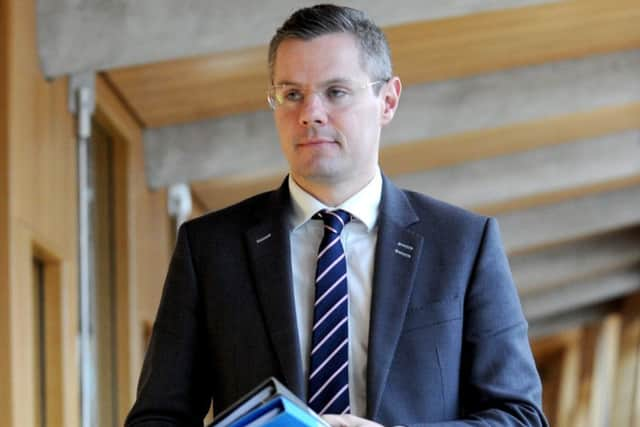GERS figures: Scotland's public spending £1576 higher per head than UK
The annual deficit has fallen by more than £1 billion from last year and is also down as a share of the size of the country’s economy to 7.9 per cent, the Government Expenditure and Revenue Scotland figures today show.
The figures also show that Scots enjoyed a public spending levels of £1576 higher than the rest of the UK - while paying on average £306 less per head in tax. This is a record so-called “union dividend” in recent years.
Advertisement
Hide AdAdvertisement
Hide AdFirst Minister Nicola Sturgeon said: “On the back of continued economic growth and rising revenue, Scotland’s deficit fell again in 2017-18.


“Looking at the wider economic picture, these figures - along with recent Labour Market Stats, Labour Productivity and GDP figures - show that Scotland is on the right trajectory.
“It also demonstrates that our commitment to sustainable economic growth is the right one and we will continue to stimulate our economy in this way to reduce the deficit.


But Scottish Secretary David Mundell said: “These Scottish Government figures show that at more than £13 billion, Scotland’s deficit at 7.9 per cent as a share of GDP is four times that of the UK’s 1.9 per cent as a whole. This is concerning.
“However these figures also confirm that being part of a strong United Kingdom – the 5th largest economy in the world – is worth nearly £1,900 for every single person in Scotland, which supports vital public services. Simply put, Scotland contributed eight per cent of UK tax, and received more than nine per cent of UK spending for the benefit of families across the country.”
Total spending across Scotland’s public sector was £73.4 billion in 2017/18 the figures show, while £60 billion was raised in taxes.
Although the GERS figures are often portrayed as an indicator of how the nation’s finances might look under independence, most experts agree they only provide a snapshot of the current situation and how it would be on “Day 1” of independence.
The figures do show a marked improvement in oil revenues by more than £1 billion as the fortunes of the North Sea continue to bounce back thanks to an improving oil picture. Scotland’s illustrative share of North Sea revenue increased from £266 million in 2016-17 to £1.3 billion.
Advertisement
Hide AdAdvertisement
Hide AdProfessor Graeme Roy of the respected Fraser of Allander think tanks said: “With both onshore revenues and expenditure rising, the relative improvement in Scotland’s fiscal position has largely been driven by a better outturn on North Sea Revenues.
“Whilst revenues from Scotland’s share of the North Sea have increased, they remain much lower than in previous years. The Office for Budget Responsibility predict that North Sea revenues for the UK as a whole will remain around £1 billion for the foreseeable future.”
The 7.9 per cent deficit north of the border as a share of the country’s economy is four times the size of the rest of the UK, on 1.9%. But that the economy north of the border has been growing at a faster rate than UK, even setting aside the North Sea revival. Scotland’s deficit is also in line with most regions of the the UK, Ms Sturgeon said, insisting that the heavy concentration of economic activity in London and the South east makes this region the “outlier.”
But Labour leader Richard Leonard said: “These figures show that the real change Scotland needs isn’t to leave the UK – it’s a Labour government willing to end austerity and invest instead.
“People across Scotland are sick and tired of austerity – and these figures show that the SNP’s plans for independence would mean unprecedented levels of austerity for Scotland.”
Greens co-leader Patrick Harvie said the North Sea recovery was nothing to welcome
He said: “Here we have another reminder that the Scottish economy is still too focussed on oil and gas extraction instead of making the needed transition to clean and sustainable renewable sources of energy.”
Liberal Democrat leader Willie Rennie said the figures were a “cruel blow” to the SNP’s dream of independence.
Advertisement
Hide AdAdvertisement
Hide Ad“Whichever way you look at it, under nationalist plans all the good things we all want to do in Scotland would be under threat because of funding cuts,” he said.
“Investing in people through education and mental health would be harder under independence.”